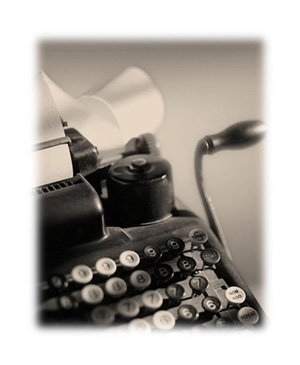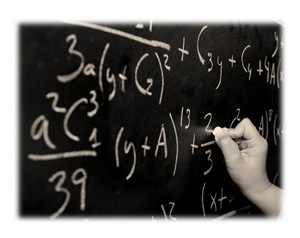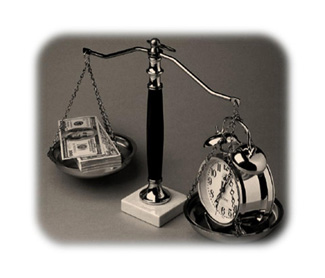Pricing Jewelry
for Wholesale and Retail

When pricing jewelry for wholesale it is a good idea to start by considering the end retail figure. For this I use a formula that will take into account material costs, labour costs, market value and all the varying details about the item I am pricing.
Once you can arrive at a price that feels right for the item and will compensate you well for your time and expenditures you ideally should be able to divide that figure by two to establish the wholesale price point.

Using a Formula
There are many considerations for arriving at the right figure when pricing jewelry. While there is no cut and dried, right and wrong for pricing your work there are some important guidelines for establishing the right price for your jewelry.
Please remember that the information I am sharing is only a guideline and it is from my years of experience creating handmade jewelry. These guidelines will vary depending on your skills, the kind of jewelry you make and what materials you use.
When I started making jewelry twenty years ago the rate was about $25.00 per hour. Now, I know that sounds pretty good, but truthfully speaking, that is never the rate that you actually get and I will explain why that is later.
I have divided my "formula" for pricing jewelry into four unique steps so that you may arrive at a pricing structure that truly feels right for you.
There are many opinions and formulas out there that will tell you how to price jewelry and while I will say that none of them are "wrong" there are some that I truly do not align with.
Some suggested formulas are on the low end and do not take into account the many steps and expenditures involved in running a jewelry making business.
As you become more swift with your hands and an expert in your field you will soon learn that the making of the jewelry is but a small portion of what you will do in your business.
First let me share what kind of jewelry I make and what my production process is. I design vintage style jewelry which is all hand soldered and professionally plated. I use medium to high quality semi precious stones, crystals, shell and freshwater pearl.
On many of my pieces I use techniques that are unique and I also incorporate some of my own original artwork or hand sculpting.
At shows my jewelry is generally regarded as reasonably priced. Many of my customers remark that my prices are good and there are few shows that I do where customers ask "why is it so expensive?" In fact, at some shows customers will actually tell me I am not charging enough. Overall I would say my product is mid range.
The following are the steps I recommend for pricing jewelry. By following these steps you can arrive at a fair price for your jewelry as there is room for adaptation:
1)Material Costs
Your material costs should include the shipping costs you paid to receive the goods as well as well as other costs incurred such as cement, solder and electroplating. Take that figure and mark it up by 1.5 to 4 times the cost. In other words if the materials cost is $1.00 you will mark it up to anywhere between $1.50 to $4.00.
If you are buying your materials at wholesale, in bulk you can easily use the higher figure. If you are buying your materials in small quantities or at retail and feel that the items will be priced too high you can use the lower end mark up.
When starting out you may want to purchase materials in smaller quantities as you experiment with techniques, new materials and designs but, eventually you will benefit from buying your materials at wholesale if you will be producing in bulk.
If you are using materials that are high end such as sterling silver, vermeil, gold or high quality gemstones the mark will go up accordingly. For example: it is typical to mark up sterling silver by 400% when pricing jewelry (cost x 4).

2) Setting an Hourly Rate
When setting an hourly rate you must set a business rate. This rate is not as though you are working for a company, it is a rate to cover all aspects of running your business and all expenses incurred in operating your business.
When you are working for a company your hours are defined and you are not charged for the materials you use at work.
When you are in business for yourself you are your company and selling your jewelry will be the only compensation for show fees, packaging, business insurance, travel expenses, daycare, equipment, tools, display, electrical, petty theft, damage, office supplies, printing, and on and on. Therefore, you must include all your expenditures in your hourly rate.
When pricing jewelry it is difficult to forecast all the business expenses, especially those incurred in the first year. In order to incorporate those expenses into your pricing structure you should always keep your business overhead as well the many hours you will spend running your business in mind when putting a value on your work.
First, calculate how long it takes to complete an item from start to finish. This should be your actual work time and not hands off time such as drying or curing times for your pieces. Make sure to include all steps involved in the manufacturing process.
Take the number of minutes it takes to complete a piece and multiply that figure by $1.00 to $2.00 dollars. Then, add this figure to your material cost.
So...if it takes you ten minutes to make a pair of earrings and the total material cost is $3.00 the earrings could be priced at $23.00.
As I touched on earlier, this hourly rate ranging between $60.00 to $120.00 is by no means what you earn per hour. It is simply a per piece price that will encompass all aspects, expenses and labour involved in running your business.
Somewhere within that range you will find your comfort zone and establish what is the right price for your individual work. Be honest with yourself and search within to make sure that, when pricing jewelry, your comfort zone does not mean selling yourself short.
More often than not artists tend to under value their work and price themselves too low. Pricing your work too low only diminishes the perceived value of your designs.
When artists start competing for lower prices within the same marketplace it draws in more bargain hunters and less art enthusiasts, thereby lowering the overall quality of the show or venue in which the work is sold.
By the same token you do not want to price yourself right out of the market. It is, however, always better to start higher when pricing jewelry and then adjust your prices down if they are too high.
If you start too low it can be difficult to suddenly increase your prices. I have over the years increased my prices by a couple of dollars here and there, slowly and only on a few items at a time.
When I first started my business I was afraid to ask for too much for my work. Over time I began to understand the value of my talents and hard work and slowly I started to raise my prices. A funny thing happened...as I became more confident around pricing jewelry and raised my price points I started to sell more.
Once you establish the price that is right for you and your product you can divide that figure in half to arrive at the wholesale price that you will charge to stores. After you set the retail price if you find that half is really too little for wholesale then you are setting your retail prices too low on the scale.
3) Adjusting Your Formula
It would be great if there was a perfect formula for pricing jewelry that you could enter into a computer and print out but, putting a price on your individual pieces is a bit of a complex process.
For this reason I recommend that the formula is only a guideline and that you re-evaluate each price based on the following criteria:
- Design Complexity - Assess the level of difficulty or skill involved in making the item. Aside from the time it takes to complete an item there are techniques that are just more challenging to execute than others.
- Expertise - Perhaps you have developed a unique process or talent in a particular medium or technique. Factor this unique skill into your price points.
- Overhead - When pricing jewelry it is important to understand what kind of overhead you have for your business. If you are selling online and using free networking to attract customers your overhead will likely be very low. In this case you may have more room to play with when it comes to pricing. However, if you are embarking on a business to sell your line at high end shows or even many middle scale shows your overhead will be substantially higher. You will have the added expense of travel, accommodation and show fees. You must price accordingly. There are some shows that charge thousands of dollars for exhibition space and it is important not to under price your work. Make sure that you can cover your costs and make a good profit.
- Original Work - If the item contains original artwork, images reproduced from your original artwork or a casting of your hand sculpted or carved artwork you should consider this when pricing jewelry.
- Custom Work - If the item is a custom designed piece, custom work should be priced at a higher rate than non custom work. Typically customers understand that the rates are higher for pricing jewelry for custom designed work.
- Rare Materials - The item may include materials that are rare, vintage or one of a kind and therefore must be assessed at a higher value. A good example of this might be a vintage glass cameo or a one of a kind lamp-work bead that you purchased from another artist.
- Material Volume - Some jewelry designers use a high volume of materials in their work. There is often the temptation to build a project with a multitude of bead caps or a variety of trinkets. It can be so exciting to use all these new supplies and it is sometimes difficult to select what to include and what to leave out. In no way am I criticizing other artists work. I have seen some fabulous work that are abundant in the use of materials and that is what really makes the designs so striking. This kind of work generally commands a higher price point and tends to be a little more exclusive. If your work is heavily material laden and you feel it will not fetch the price it really deserves you can do one of two things: 1) - Carefully look over your design and see if you can achieve the same effect with the removal or replacement of a few materials. Many times you will find that you will actually prefer the look you will create by re-assessing your materials carefully.2) - Search for suppliers with better prices that carry like materials to the ones you have chosen or see if you can purchase the materials in a larger volume at a lower price. By adjusting your use of materials you may meet the price point you are looking for or you may just decide you will simply adjust your prices accordingly, reflecting the cost of materials you choose.
- Learning Curve - This is probably one of the most important considerations for pricing jewelry when first starting out. Take into account the learning curve involved in using new techniques, tools, materials or simply using your own two hands in a way that you may have never used them before. It is for this reason that I recommend using an hourly rate range for pricing jewelry. When I first started making jewelry every design seemed to take me an hour to make. With practice and experience I became very good with my hands and able to produce more quickly. You may consider pricing your items at the lower end of the scale if you know that with time you will increase your speed and earn more per piece. This is different from placing a low value on your work. Here you are simply recognizing that you are essentially "in training" and the company you work for (YOU) will be patient during this period knowing that monetary rewards will increase with experience.
4) Perceived Value
Wait...we are not quite done with pricing jewelry! When you have used the basic formula for pricing your work you must look at it from a different angle and that is the perceived value of each individual piece.
This involves two things. First, you will step back and look at your item and get a feel for how the price is in the market. There will be times when you use the high end of the pricing scale and the price will still seem too low.
Second, you will look at your item and blurt out a price that is strictly from your gut feeling. If you feel unsure, it does not hurt to get an objective opinion from someone whose judgment you trust.
Sometimes you will just have a gut feeling about what a price should be. Often, when pricing jewelry, I will do so by instincts alone. After many years I generally know what a piece should sell for. I have a good sense of both materials and time involved without using a formula.
However, there are times when I am very strict with my formula especially when it comes to developing new techniques and pricing jewelry for larger scale wholesale.
A number of years ago I prepared many samples for the shopping channel. I put together a binder for myself with scans of my pieces. I made detailed notes on labour, plating, material costs as well as a price comparison chart for various suppliers of like items.
Being diligent about the jewelry pricing formula for each design allowed me more control over how much room I had for price negotiation on my pieces.
Because I was going to be producing in large quantities I made sure that what I was offering to the shopping channel contained materials that I could easily get from more than one supplier.
I then set my prices for the high end on supplies. That way if I couldn't find the materials at the cheapest supplier on my chart I was covered both for availability and cost.
Pricing Jewelry
The Overall Picture
When pricing jewelry there will be times when you will make much more on one item and and by the same token...not so much on another. For example my best selling earrings for the past twenty years are extremely easy to make and economical in terms of material cost.
I find it amazing to say that one pair of earrings can consistently be a winner for that many years. They are crystal earrings with filigree detailing and I offer them in about fifteen colors. I often joke that I will set up a booth and offer these earrings only...by the dozen of course.
I also have my prized necklace that I designed as the necklace of my dreams. It is a bit tedious to make and it involves a fair bit of material. I could sell circles around this necklace with my best selling earrings as they are so simple to make in comparison but...I love the necklace.
The necklace is not only special to me but, occasionally someone will fall in love with it. While I don't charge as much for my labour on the necklace I am still rewarded for my efforts both monetarily and in spirit.
Although the necklace is not overpriced it is a nice add on to a show when I do sell one and it adds to the overall allure of my booth. It is one of my show stopper pieces and shows my skill in terms of design.
Overall there is give and take in your pricing structure. Some pieces may be your bread and butter while others may be your passion. The general price structure will all balance out provided you do not under sell yourself on any given item.
That...in a very big nutshell is my formula for pricing jewelry. I hope that you will find it helpful in arriving at the perfect prices for your works of art.
New! Comments
Have your say about what you just read! Leave me a comment in the box below.